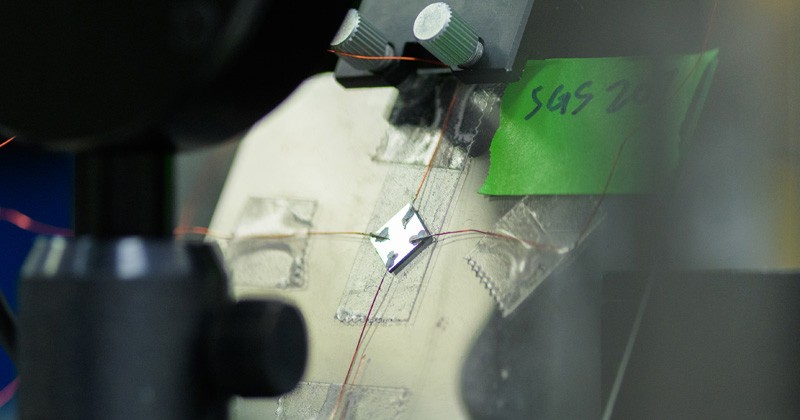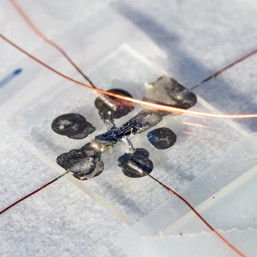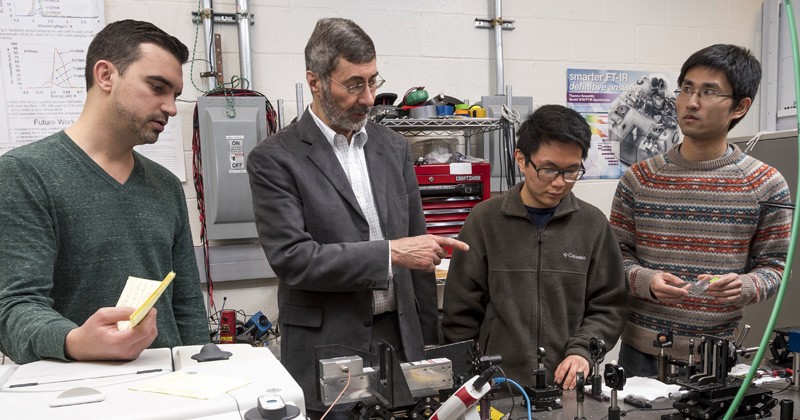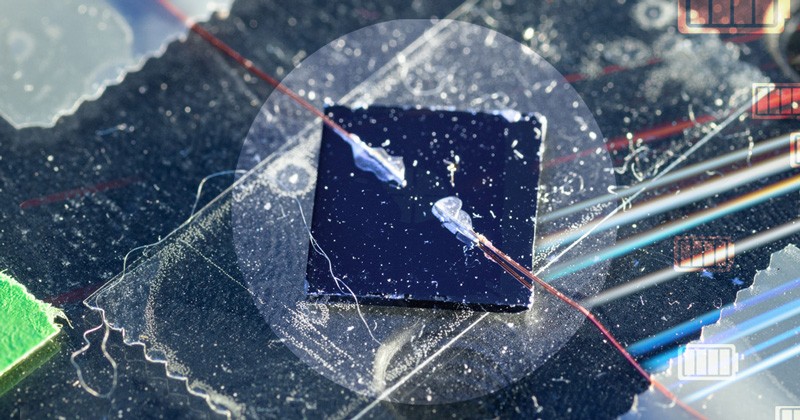UD engineers make materials that could enable better computer chips
Imagine how much you could accomplish if the circuits in your laptop and cell phone worked 10 times faster, and your battery lasted 10 times longer, than they do now.
In order to understand the technology of tomorrow — and today — you have to go back to equations developed by physicists in the 1930s. One of these physicists was Hermann Weyl, who in 1937 theorized the existence of Weyl fermions, massless particles that could carry electrical charge at high speeds. No one has ever observed these particles in isolation, but Weyl fermions have been spotted in a special class of materials called Weyl semimetals. In 2015, a research team from Princeton found that tantalum arsenide is a Weyl semimetal, and since then teams from around the world are studying other materials to see whether they exhibit the properties predicted by Weyl.
Now, a team of electrical engineers at the University of Delaware has discovered that novel semi-metallic materials, alloys of germanium and tin, have properties like Weyl semimetals. This has not been observed before by any other research group.
The team is led by James Kolodzey, Charles Black Evans Professor of Electrical and Computer Engineering, who studies the flow of electric current through materials.

Research by Prof. James Kolodzey and his team suggests that the alloy of germanium and tin shown has properties similar to Weyl semimetals.
“Historically, electrical engineers have tried to categorize materials from an electronic and optical point of view,” Kolodzey said. For example, metals like copper and aluminum conduct electricity well because of the movement of electrons, the subatomic particles that carry electric charge. “In metals, electrons are a bit loose and flow easily,” said Kolodzey. That’s why copper is used in wiring to bring electricity into buildings.
Semimetals conduct electricity, too, just not as efficiently has metals do. However, the current can move faster through semimetals than through semiconductors — the materials like silicon that are commonly used in computer chips, cell phones, and other ubiquitous consumer electronics.
“The electrons in a Weyl semimetal are very fast, 10 times faster than in a conventional semiconductor, so we would expect possible Weyl circuits to have much higher speeds,” he said.

A sample of the Weyl semimetal molybdenum telluride, surrounded by circular contact pads and copper wire electrodes, for an investigation of electrical and optical devices based on Weyl fermions.
Kolodzey’s group has shown that the materials they are studying, molybdenum telluride and germanium tin alloys, act like Weyl semimetals. For example, they are very responsive to light that vibrates in a circular pattern, a property of Weyl semimetals that could be particularly useful in optical and electronic applications, from remote sensing to medicine and more.
“At the University of Delaware, we are trying to use electrical engineering to make things out of these materials,” said Kolodzey. “We want practical applications and devices, from transistors to diodes to integrated circuit components. Instead of using semiconductors, we want to make them with Weyl semimetals. Unlike all the known Weyl semimetals, the germanium-tin alloys are compatible with silicon circuit fabrication processes.”
These devices could, in theory, operate at high speeds but with low power requirements. Even in heavy use, laptops and cell phones wouldn’t overheat, and the batteries would last much longer than they do now.
The materials under investigation by Kolodzey’s team could also be used to optimize solar cells, which convert light energy into electricity, and also to make detectors of infrared light, for thermal imaging.
Post-doctoral researcher Tao Wang has been integral to this project, as have several current and former graduate students in Kolodzey’s group, including Ryan Hickey and Dominic Imbrenda.
This work is supported by a grant from the Air Force Office of Scientific Research.

Discussing their work on Weyl semimetals are (left to right) visiting scientist Dominic Imbrenda, James Kolodzey, the UD Charles Black Evans Professor of Electrical and Computer Engineering, undergraduate student Calvin Duong and post-doctoral researcher Tao Wang.

